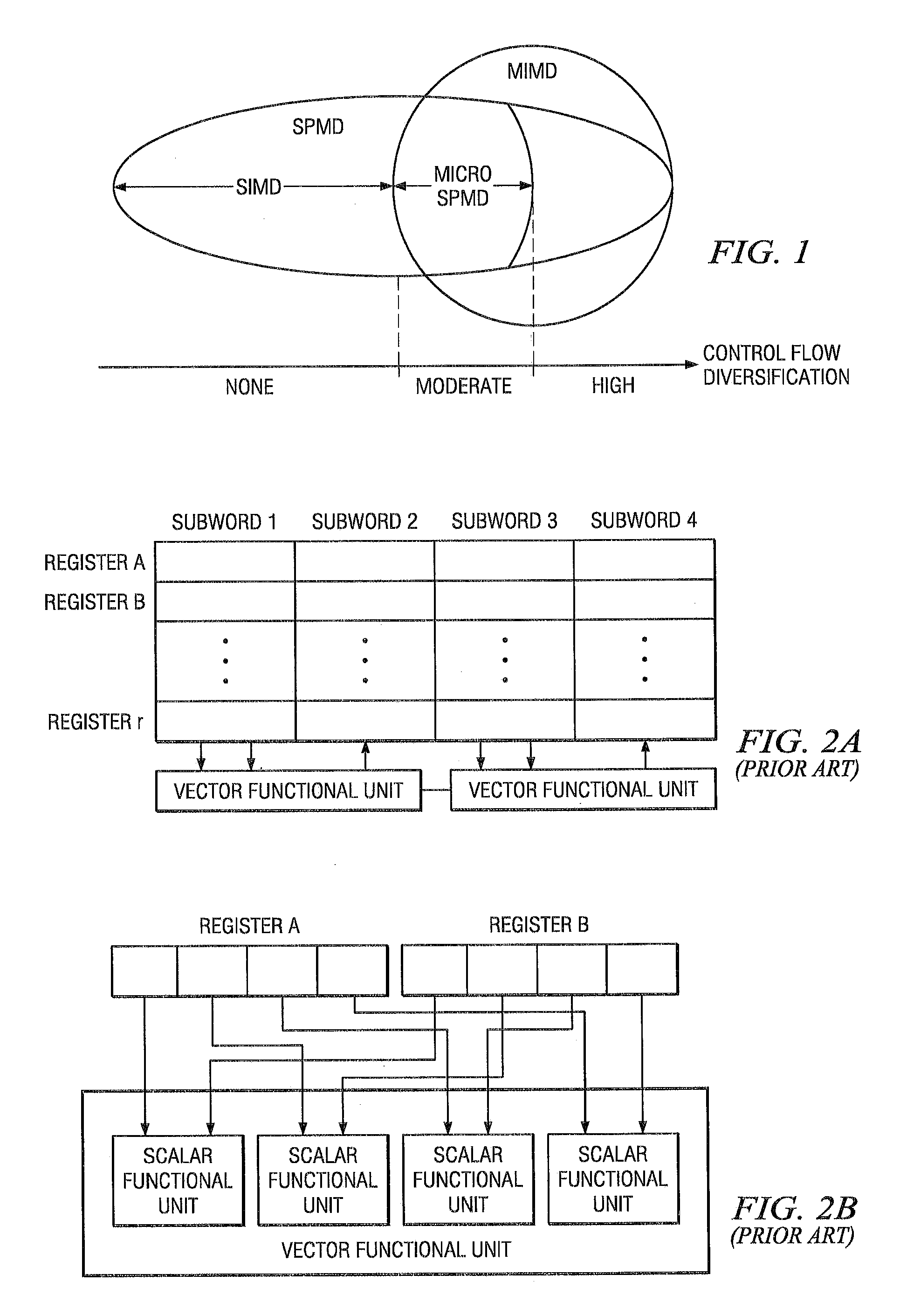System and method for efficiently executing single program multiple data (SPMD) programs
a microprocessor and data system technology, applied in multi-programming arrangements, digital computer details, instruments, etc., can solve the problems of large performance degradation of prior art simd machines, inefficient support of problems, and idleness of other pes, and achieve the effect of efficient execution of single program multipl
- Summary
- Abstract
- Description
- Claims
- Application Information
AI Technical Summary
Benefits of technology
Problems solved by technology
Method used
Image
Examples
Embodiment Construction
[0067]The figures and the various embodiments used to describe the principles of the present invention in this patent document are by way of illustration only and should not be construed in any way to limit the scope of the invention. Those skilled in the art will understand that the principles of the present invention may be implemented for any suitably arranged microprocessor.
[0068]In order to more clearly describe the structure and operation of the present invention, a detailed definition of certain terms will be first be given. These defined terms will be used throughout the remainder of this patent document.
[0069]Basic Definitions. (1) “Job”: A job is a combination of a program and an input data-set. The same program may be instantiated with a number of different input data-sets, thus generating different jobs. Throughout this patent document it will be assumed that the execution of jobs generates asynchronous processes, wherein no inter-job synchronization is required. Jobs ar...
PUM
 Login to View More
Login to View More Abstract
Description
Claims
Application Information
 Login to View More
Login to View More - R&D
- Intellectual Property
- Life Sciences
- Materials
- Tech Scout
- Unparalleled Data Quality
- Higher Quality Content
- 60% Fewer Hallucinations
Browse by: Latest US Patents, China's latest patents, Technical Efficacy Thesaurus, Application Domain, Technology Topic, Popular Technical Reports.
© 2025 PatSnap. All rights reserved.Legal|Privacy policy|Modern Slavery Act Transparency Statement|Sitemap|About US| Contact US: help@patsnap.com



